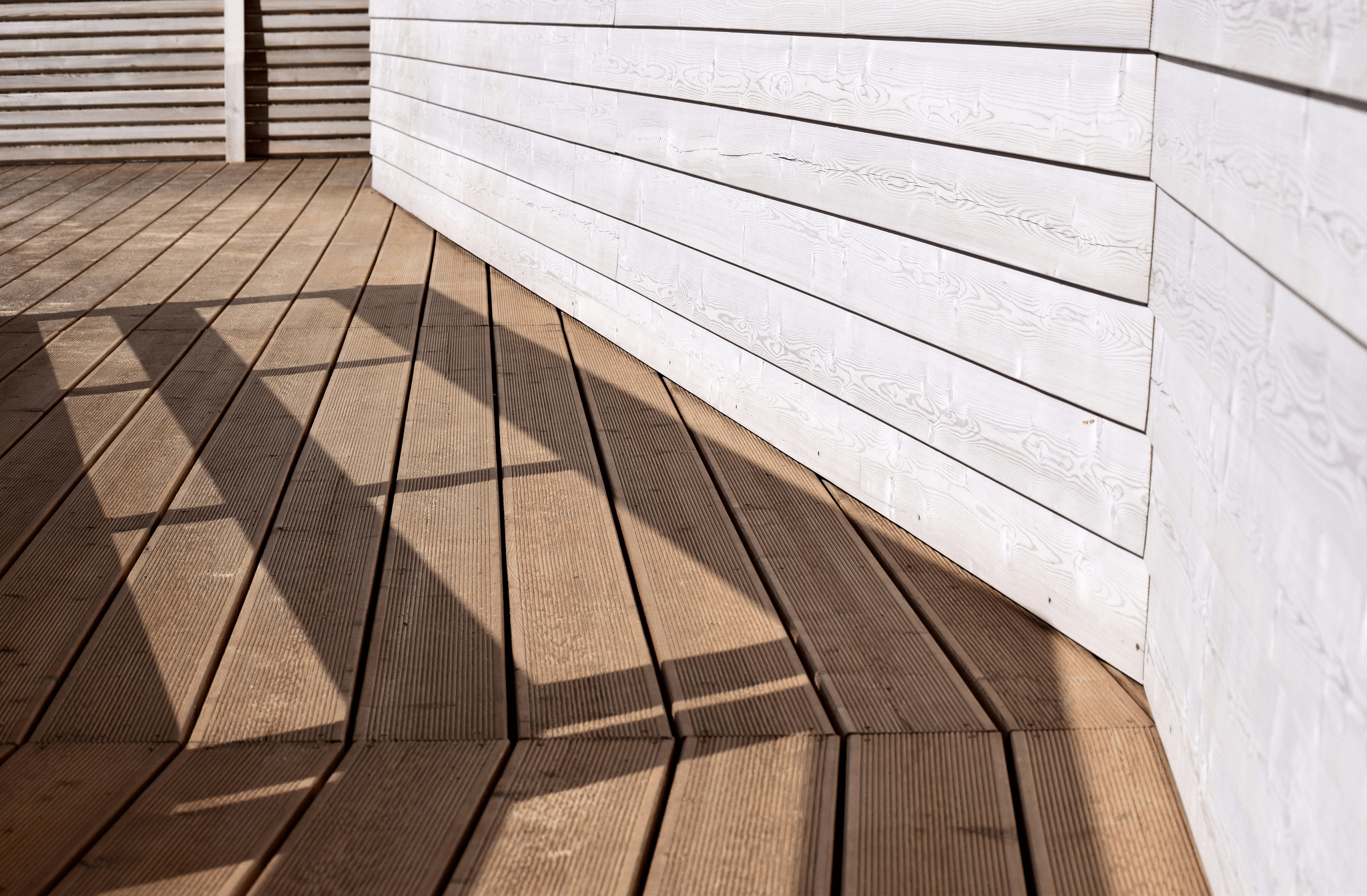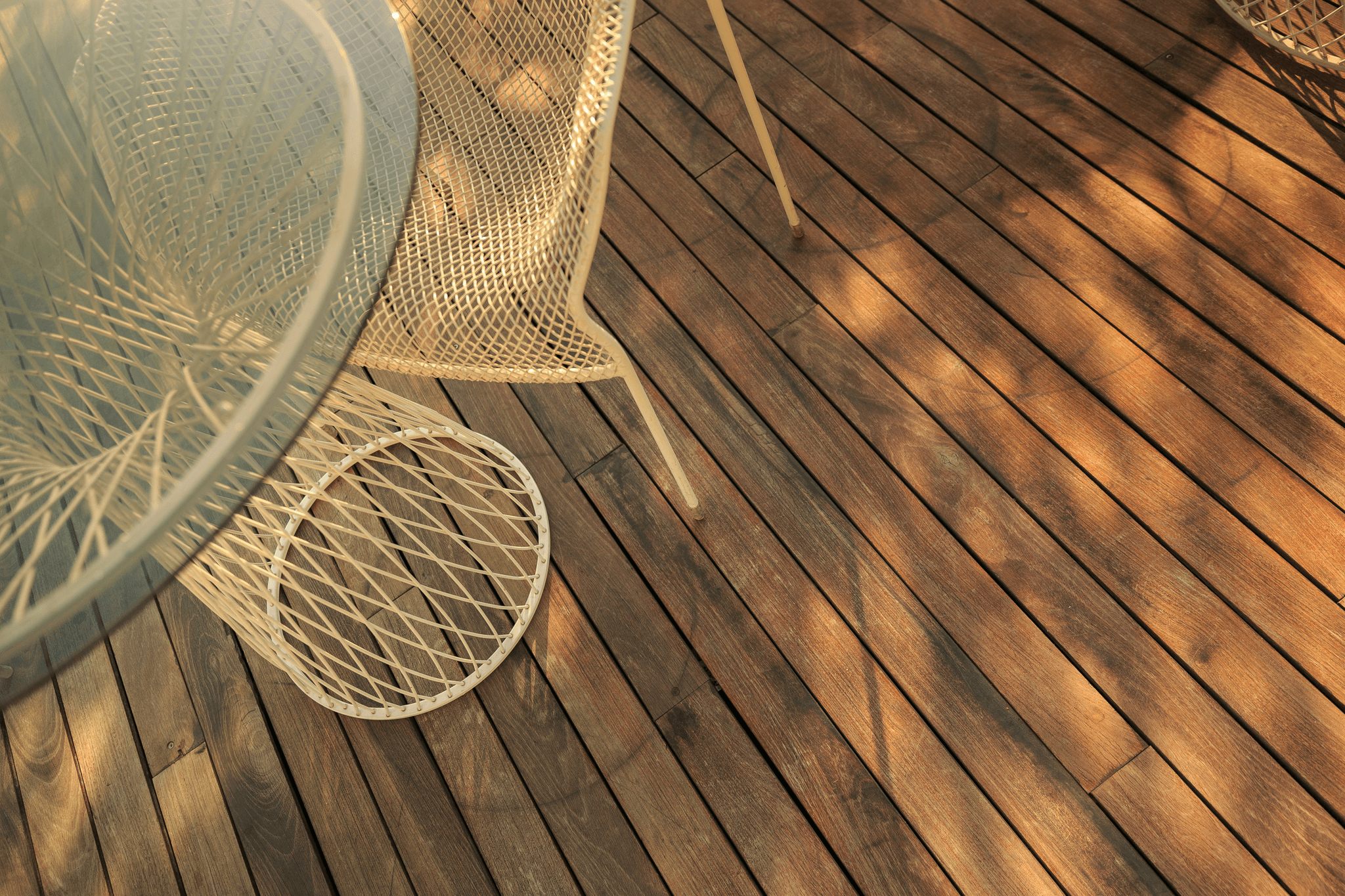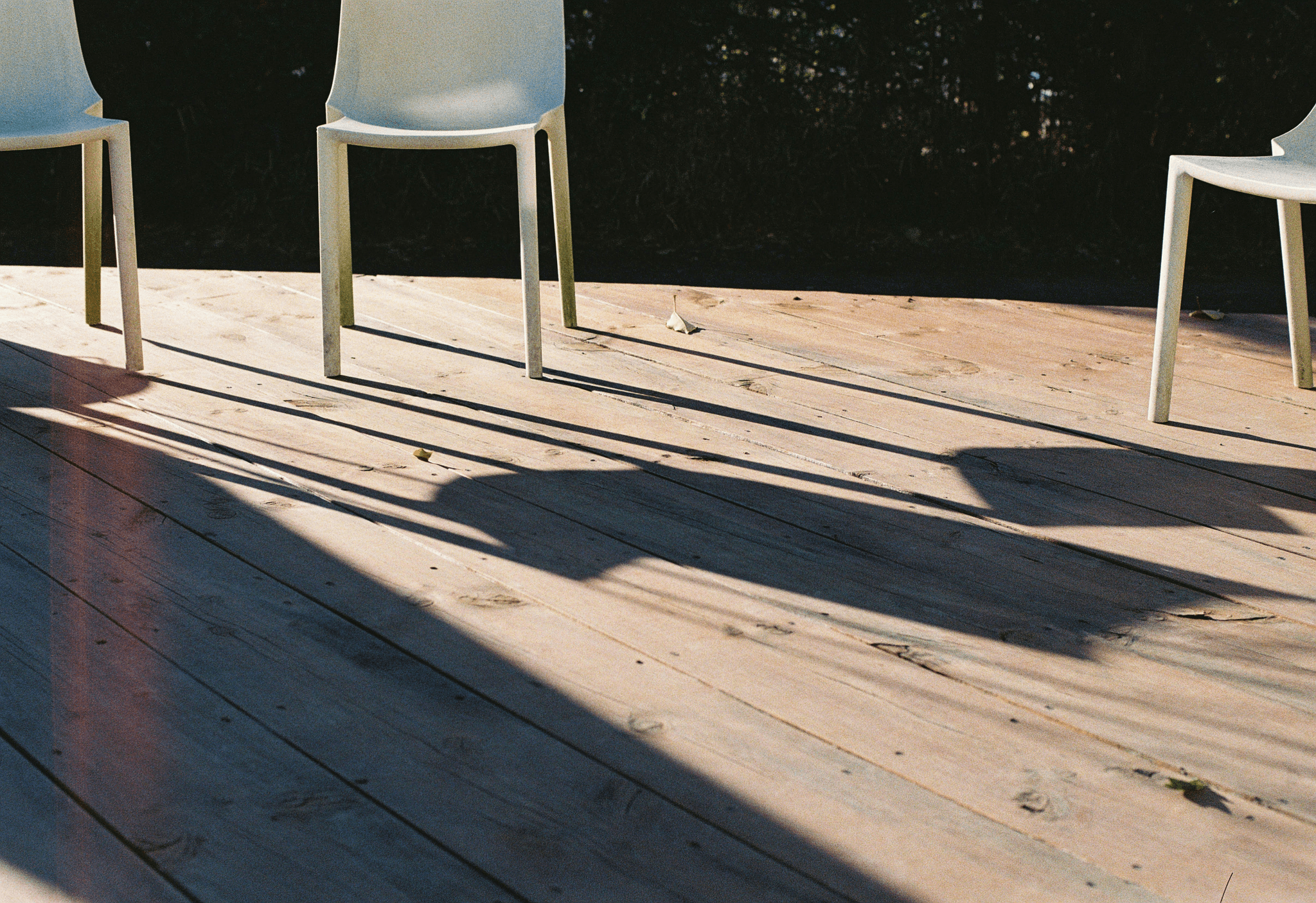Introduction

What is PVC Decking?
PVC decking is a synthetic option made from polyvinyl chloride, commonly known as plastic. This type of decking material is designed to mimic the appearance of traditional wood while providing superior resistance to moisture, fading, and pests. With its low maintenance requirements and long lifespan, PVC decking has become a go-to choice for many homeowners looking to elevate their outdoor living areas.
Understanding Composite Decking
Composite wood decking combines natural wood fibers with plastic materials to create a versatile and eco-friendly alternative to traditional timber decks. This innovative blend offers enhanced durability and weather resistance compared to pure wood options while maintaining an appealing aesthetic. Homeowners appreciate composite decking installation for its ease and the variety of styles available that suit different tastes.
The Rise of Eco-Friendly Decking
In recent years, there has been a significant shift toward eco-friendly building materials in home improvement projects, including outdoor spaces. Both PVC decking and composite lumber decking have emerged as viable options due to their sustainable production processes and longevity. As environmental awareness grows among consumers, choosing green solutions like composite wood becomes not just a trend but a responsible lifestyle choice.
Key Differences Between PVC and Composite Decking

Material Composition Explained
PVC decking is made entirely from polyvinyl chloride, a type of plastic that provides a robust and water-resistant surface. In contrast, composite wood decking combines wood fibers with recycled plastic to create a more natural appearance while still benefiting from some of the durability of plastic deck boards. This difference in material composition is significant; while PVC offers a uniform look with no organic content, composite lumber decking has a more textured feel reminiscent of traditional wood.
The choice between these two types of decking material often boils down to personal preference regarding aesthetics and environmental impact. While PVC decking material is waterproof and resistant to insects, composite wood tends to be more eco-friendly due to its use of recycled materials. Ultimately, your decision may hinge on whether you prioritize longevity or sustainability in your outdoor space.
Durability and Weather Resistance
Durability is one area where PVC decking shines brightly; it’s designed to withstand harsh weather conditions without warping or fading over time. This makes it an excellent option for homeowners in regions prone to extreme temperatures or heavy rainfall. On the other hand, while composite lumber decking is also durable, it can be susceptible to moisture if not properly maintained—leading some users to worry about mold growth or degradation over time.
When comparing weather resistance between these two options, it's clear that both have their strengths but serve different purposes based on climate conditions. For example, if you live near the coast where saltwater can be an issue, PVC may outlast composite due to its non-porous nature. However, for those who appreciate the look of natural wood but want something more resilient than traditional lumber, well-maintained composite wood could be the perfect compromise.
Maintenance Requirements
Maintenance can make or break your enjoyment of any outdoor space; therefore understanding how each type stacks up is crucial when selecting your decking material. PVC decking requires minimal upkeep—occasional cleaning with soap and water usually does the trick—and doesn’t require staining or sealing like traditional wood does. Conversely, while composite wood requires less maintenance than real timber (no sanding or staining), it still benefits from regular cleaning to prevent dirt buildup and potential mold issues.
Furthermore, many homeowners find themselves drawn toward low-maintenance solutions for their outdoor spaces—a trend that has fueled the popularity of both PVC and composite options in recent years. Choosing either type means investing time into upkeep—but knowing what’s involved helps set realistic expectations for long-term enjoyment! Whether you lean towards plastic deck boards for their effortless care or opt for the charm of composite lumber decking with slightly more attention needed will ultimately depend on how much effort you’re willing (or able) to invest.
Aesthetic Appeal: Which is Better?

Visual Characteristics of PVC Decking
PVC decking boasts a sleek and modern appearance, often featuring a smooth surface that exudes sophistication. The color options for PVC decking material are vast, ranging from vibrant hues to subtle earth tones, allowing homeowners to achieve their desired look easily. Additionally, this type of plastic deck board resists fading from UV exposure, ensuring that its vibrant colors remain intact over time.
One of the standout features of PVC decking is its ability to mimic the look of natural wood without the drawbacks associated with traditional timber. Its uniformity means there are no knots or imperfections, giving it a clean and polished aesthetic that many find appealing. Furthermore, because it's made from synthetic materials, you won’t have to worry about splinters or rough edges disrupting your outdoor enjoyment.
The Look of Composite Wood Decking
In contrast, composite wood decking offers a more traditional appearance reminiscent of real wood grain but with enhanced durability and lower maintenance requirements. The blend of wood fibers and recycled plastics creates a beautiful texture that appeals to those who love the charm of natural materials without sacrificing performance. With composite lumber decking available in various finishes—ranging from rustic browns to contemporary grays—there's an option for every style preference.
Composite wood also provides depth in color variations through its multi-tonal designs which replicate the intricacies found in natural timber products. This aesthetic versatility allows homeowners to create inviting spaces that feel warm and welcoming while benefiting from modern advancements in material technology. Plus, many brands now offer capped composites that feature an additional layer for added protection against weathering while enhancing visual appeal.
Options for Customization
Customization is another area where both PVC and composite wood shine but in slightly different ways. With PVC decking, customization often revolves around color choices and surface textures; some manufacturers even offer embossed finishes for added realism and grip underfoot. This flexibility allows homeowners to tailor their outdoor spaces according to personal tastes seamlessly.
On the other hand, composite decking installation may involve more intricate design options such as patterns or borders using different colors or styles within the same project—think contrasting railings or unique layouts! Homeowners can mix and match various shades or textures within their composite lumber decking projects for an eye-catching result that's truly one-of-a-kind. Whether you prefer classic elegance or bold statements, both types provide ample opportunity for customization.
Cost Analysis: PVC vs Composite Decking

Initial Investment in Decking Materials
The initial investment in decking materials is often where homeowners first notice a difference between PVC and composite lumber decking. Typically, PVC decking material tends to have a higher upfront cost compared to its composite counterparts. However, this price disparity can be attributed to the long-lasting nature of plastic deck boards, which may save you money on repairs or replacements down the line.
On the other hand, composite wood decking usually comes at a slightly lower initial price point, making it an attractive option for budget-conscious consumers. Despite this lower entry cost, it's essential to consider that cheaper materials might not stand up as well against harsh weather conditions over time. Thus, while the initial investment in composite may be appealing, it’s crucial to weigh potential long-term expenses.
Ultimately, your choice will depend on your budget and how much you're willing to invest right from the start. If you plan on staying in your home for years to come, opting for high-quality PVC decking might prove more economical in the long run despite its higher initial cost.
Long-Term Cost Considerations
Long-term cost considerations are vital when evaluating PVC versus composite wood options for your deck. While both types of decking require some maintenance over time, they differ significantly in terms of what that maintenance entails and how frequently it needs to occur. For example, PVC decking typically requires less upkeep than composite lumber decking due to its resistance to fading and staining.
Composite wood decks may need periodic staining or sealing every few years depending on environmental exposure and wear-and-tear factors. This additional maintenance can add up over time and should be factored into your overall cost analysis when choosing between these two materials. Additionally, if you ever need repairs or replacements with either type of material—such as fixing damaged plastic deck boards or replacing worn-out sections of composite—those costs can quickly accumulate.
In summary, while initial investments are important indicators of affordability, long-term costs often tell a different story about durability and ongoing care requirements that impact overall value significantly.
Value for Money
When considering value for money between PVC and composite wood decking options, it's essential to look beyond just price tags; durability should play a significant role in your assessment as well! Although PVC may come with a higher upfront investment compared to cheaper composite options initially available on the market today—its longevity often justifies that expense over time!
Imagine enjoying beautiful outdoor gatherings without worrying about replacing rotting boards every few years; that's where quality matters! Conversely though—if you choose less expensive composites thinking they’ll suffice—you could end up spending more money later due solely because they didn’t hold up against weather elements effectively enough!
Ultimately speaking—the best value lies not just within immediate costs but also within how much longer each option lasts under real-world conditions; hence why many homeowners opt towards investing wisely into durable alternatives like premium-grade pvc decking rather than risking future expenditures through short-lived solutions instead!
Installation Process: Ease and Effort

When it comes to installing your new outdoor oasis, the choice between PVC decking and composite lumber decking can influence not just your enjoyment but also the ease of the installation process. Both materials offer their own unique methods and challenges, making it essential to understand what you're getting into before diving in. This section will break down the installation techniques for PVC decking, provide a guide for composite decking installation, and discuss whether you should tackle this project yourself or hire a professional.
PVC Decking Installation Techniques
Installing PVC decking is often considered a breeze compared to traditional wood options. The lightweight nature of PVC decking material makes it easy to handle, allowing for quicker setup times. Additionally, many manufacturers design plastic deck boards with interlocking systems or hidden fasteners that eliminate visible screws, giving your deck a sleek finish while simplifying the installation process.
Before starting your project, ensure you have all necessary tools on hand—think drills, saws, and measuring tapes—to make the process as smooth as possible. It's crucial to follow manufacturer guidelines closely since each brand may have specific requirements for expansion gaps and support structures. Once you've laid out your framework correctly, you'll find that laying down those plastic deck boards is straightforward enough even for novice DIYers.
Composite Decking Installation Guide
Composite wood decking might require a bit more finesse during installation due to its heavier weight and denser composition compared to PVC options. A solid foundation is essential; ensure that joists are spaced correctly according to the manufacturer's specifications—typically 16 inches apart—for optimal support. The installation process usually involves cutting composite boards with specialized saw blades designed for this material; using standard wood blades may lead to splintering.
When installing composite decking material, it's best practice to leave adequate spacing between boards (usually around 1/4 inch) to allow for expansion during temperature changes—a critical step often overlooked by first-timers! Many brands also offer hidden fasteners that can provide an aesthetically pleasing finish while making installation easier by eliminating visible screws on top of the boards. Follow these guidelines closely, and you'll be well on your way to enjoying your beautiful new deck.
Professional Help or DIY?
Deciding whether to go DIY or hire professionals largely depends on your comfort level with home improvement projects and how much time you're willing to invest in learning about decking materials like PVC or composite wood options. If you're handy with tools and enjoy working outdoors, tackling the project yourself could save you money while providing a great sense of accomplishment when you see those plastic deck boards come together beautifully.
However, if you're short on time or feel overwhelmed by the thought of navigating through composite decking installation procedures alone, hiring professionals might be worth considering despite higher upfront costs. Experts not only bring experience but also access specialized tools that can expedite the process significantly—ensuring everything meets safety codes along the way! Ultimately, weigh both options carefully before committing; after all, this is an investment in creating an outdoor space you'll cherish for years.
Environmental Impact of Decking Materials

When it comes to decking materials, the environmental impact is a critical factor for many homeowners. Both PVC decking and composite lumber decking have unique sustainability profiles that can influence your choice. Understanding these differences can help you make an informed decision that aligns with your eco-friendly values.
Sustainability of PVC Decking
PVC decking is primarily made from synthetic materials, which raises questions about its long-term sustainability. While it doesn't require trees to be cut down, the production process involves fossil fuels and other non-renewable resources, contributing to environmental concerns. However, it's worth noting that PVC decking material is highly durable and can last decades without needing replacement, which may offset some of its initial ecological footprint.
Moreover, PVC decking is recyclable at the end of its life cycle, although recycling options are still limited in many areas. This recyclability means that while the initial production might not be perfect for Mother Nature, there's a potential for reducing waste in landfills over time. Ultimately, if you choose plastic deck boards made from recycled content or opt for brands with sustainable practices, your PVC choice can be more environmentally friendly than it seems.
Eco-Friendly Aspects of Composite Lumber Decking
On the other hand, composite lumber decking often boasts a more favorable environmental profile due to its use of recycled wood fibers and plastic materials. This blend reduces reliance on virgin timber and minimizes waste by repurposing materials that would otherwise end up in landfills. Additionally, many composite wood products are designed to be low-maintenance and resistant to rot and decay, which means they last longer without needing chemical treatments or replacements.
Composite wood decking also tends to have a lower carbon footprint during production compared to traditional wood decks since less energy is typically required for manufacturing processes involving recycled materials. Furthermore, some manufacturers actively engage in sustainable forestry practices when sourcing their wood fibers—ensuring that their products contribute positively to forest health rather than depleting it. If you're looking for an eco-friendly option among decking materials, composite options certainly hold strong appeal.
Composite Decking Inc’s Commitment to Green Solutions
Composite Decking Inc takes pride in being at the forefront of green solutions within the industry by prioritizing sustainability in both product design and manufacturing processes. Their commitment includes using high percentages of recycled content in their composite wood products while ensuring minimal waste during production through advanced technologies. By choosing their composite decking installation systems over traditional alternatives like PVC decking material or solid timber boards, customers support a brand dedicated to preserving our planet's resources.
Moreover, Composite Decking Inc emphasizes transparency about their sustainability initiatives—from sourcing raw materials responsibly to implementing eco-friendly manufacturing techniques that reduce emissions and energy consumption. They even provide information on how consumers can recycle old decks made from their products once they're ready for replacement or renovation! So when you select Composite Decking Inc’s offerings for your outdoor space transformation project, you're not just investing in quality; you're also contributing positively toward a greener future.
Conclusion

Choosing the right decking material can be a daunting task, especially with the plethora of options available today. Whether you lean towards PVC decking or composite wood decking, understanding their unique features will help you make an informed decision. Consider your lifestyle, budget, and aesthetic preferences to find the perfect match for your outdoor space.
Choosing the Right Decking Material
When selecting between PVC decking and composite lumber decking, think about how each material aligns with your needs. Do you prioritize low maintenance and durability? Or perhaps you're more inclined towards eco-friendly options that offer a natural wood look? Each type of decking material has its advantages; weighing these factors will guide you toward the best choice for your home.
Long-Term Benefits of Composite Wood
Composite wood offers numerous long-term benefits that often outweigh initial investment costs. With its resistance to fading, splintering, and moisture damage, composite lumber decking promises longevity and durability that can enhance your outdoor experience for years to come. Additionally, many manufacturers provide warranties that further solidify the value of investing in high-quality composite wood.
Making Your Outdoor Space Shine
No matter which decking material you choose—be it PVC or composite—the right installation can transform your outdoor area into a stunning retreat. With an array of colors and finishes available in both PVC decking materials and composite wood options, customization is at your fingertips. So go ahead and create an inviting space that reflects your style while being functional for entertaining family and friends!
